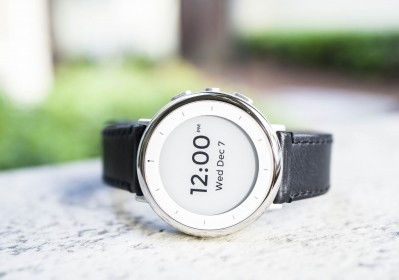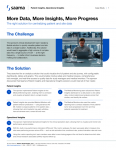Clinical grade wearables market to reach $18.9bn by 2020

The global healthcare wearable devices market earned revenues of $5.1bn in 2015, according to recent Frost & Sullivan report, which estimated that this number will reach $18.9bn in 2020.
As Outsourcing-Pharma.com previously reported, the widespread adoption of new technologies, such as wearables, will change many aspects of how clinical trials are conducted. This adoption is being driven by government, pharmaceutical companies, and consumers alike.
Frost & Sullivan's Transformational Health Industry Analyst, Kamaljit Behera, told us the increasing need for an integrated healthcare system and rise in healthcare consumerism are among the key growth drivers for clinical grade wearables.
“Customers are expected to hold more value and trust for clinically relevant wearables that can address unmet healthcare needs and empower consumers with actionable solutions for self-health management against commoditized general-purpose informant/consumer wearables,” he said.
“Also, integration of clinical wearable devices with complementing digital health solutions can improve the efficiency of care delivery by enhancing data utility, and support the shift from a treatment-focused, fee for service (FFS) driven healthcare system to one of value and prevention.”
Earlier this year at the Avoca Quality Consortuim Summit, Jane Rhodes, PhD, MBA, Senior Director, New Initiatives, Innovation Hub, Biogen said that wearables are transforming clinical investigation. She added that Biogen is "very encouraged by the fact that these types of tools may provide guidance in future clinical work."
For CROs, wearables may provide deeper insight into clinical studies through high acuity multipoint data tracking, which is unique to clinical grade wearable technologies.
According to Kamaljit, these technologies can be leveraged by Pharma companies or CROs in order to enable clinical trial remote patient monitoring to boost patient recruitment rate, therapeutic outcomes, and overall clinical trial efficiency.
“Further influx of non-traditional participants (IT platform and analytics providers) are expected to increase convergence of these wearables technologies with complementing digital health platforms and intelligence PaaS/SaaS [platform as a service/software as a service] solutions to bring interoperability into clinical trial study protocol, design, and data management process without compromising trial efficacy and patient safety,” he added.
Yet, wearables are one part of the rapidly developing Internet of Things (IoT) healthcare market – an area which is expected to reach $410bn by 2022 according to a report by Grand View Research.
Wearable technology, including mobile devices and sensors, will be combined with advanced software and other "non-traditional" technologies to support real-time data capture and analysis for IoT in the healthcare market.


















